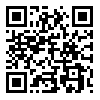مجله رویش روانشناسی از دادن گواهیهای کاغذی معذور است. لطفا تقاضا نکنید. همه گواهی ها در صفحه شخصی کاربران موجود است.
year 9, Issue 9 (Winter 2021 2020)
Rooyesh 2020, 9(9): 1-14 |
Back to browse issues page
Download citation:
BibTeX | RIS | EndNote | Medlars | ProCite | Reference Manager | RefWorks
Send citation to:



BibTeX | RIS | EndNote | Medlars | ProCite | Reference Manager | RefWorks
Send citation to:
Musawi W, Bahrami ehsan H. (2020). Introduction and Development of Short-Term Dynamic Therapy Based on Mentalization (SDTBM);An Inovative Treatment of Children Disorders. Rooyesh. 9(9), 1-14.
URL: http://frooyesh.ir/article-1-2397-en.html
URL: http://frooyesh.ir/article-1-2397-en.html
1- Ph.D in Health Psychology, University of Tehran, Tehran, Iran. , walaa.hadi@ut.ac.ir
2- Professor, Department of Psychology, University of Tehran, Tehran, Iran.
2- Professor, Department of Psychology, University of Tehran, Tehran, Iran.
Abstract: (5290 Views)
Mental health experts have suggested various programs and interventions enhance parents’ parenting levels. However, the emergence of new issues such as women’s occupation growth, the tendency to have an only child, and the increasing usage of cyberspace have faced families with more problems and made mental disorders more complicated. Moreover, the increased number of divorces, substance abuse, and economic problems expose children to more problems. Therefore, newer and more preventive interventions to enhance families’ well-being seem necessary. This study aims to describe the designing and development process of an innovative intervention based on mentalization theory. This intervention is developed to enhance parents’ mentalization ability and to improve their relationship with their children. The general aim of this intervention is to treat different disorders in childhood and support family members' mental health and prevent transmission of destructive parenting models over generations. This study includes two sections. In the first section, by using the Delphi method, theoretical and pivotal basics of the designed therapy were extracted from relevant resources and evaluated. Then, the schema of the new mentalization-based therapeutic approach was designed. In the second section, through randomized controlled trials, the efficacy of this therapeutic approach was measured. In the end, the evaluation procedure of the designed intervention and limitations and suggestions will be discussed.
Type of Article: Applicable |
Subject:
Psychoanalysis- Analytical psychology
Received: 2020/10/16 | Accepted: 2020/11/20 | ePublished: 2020/12/30
Received: 2020/10/16 | Accepted: 2020/11/20 | ePublished: 2020/12/30
Send email to the article author
| Rights and permissions | |
 |
This work is licensed under a Creative Commons Attribution-NonCommercial 4.0 International License. |






